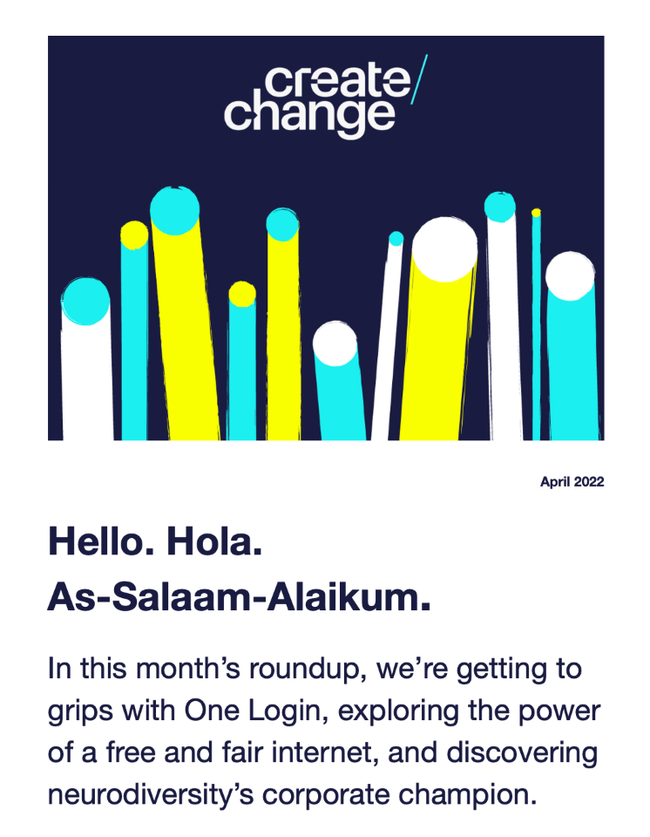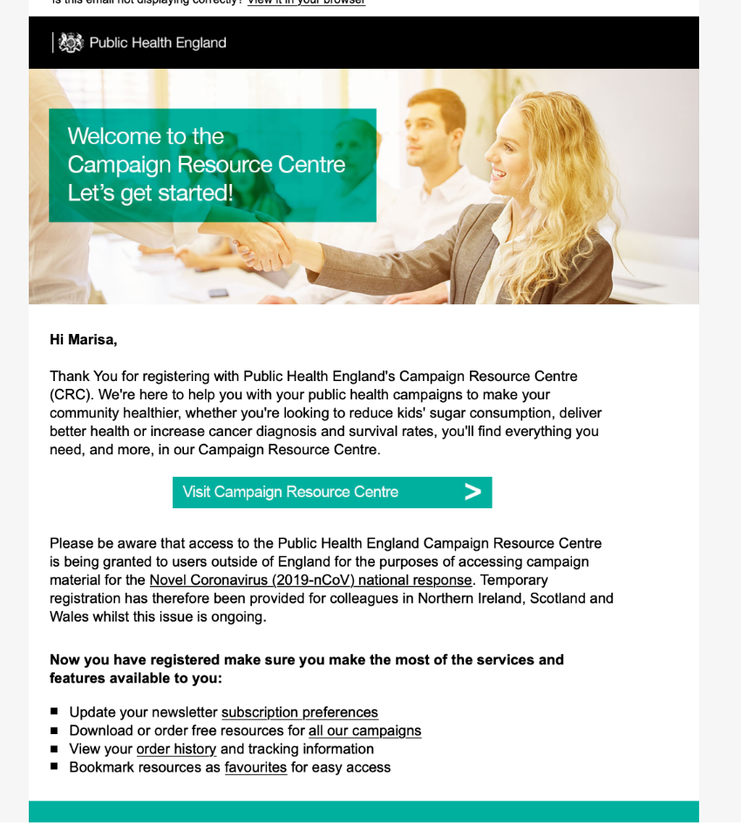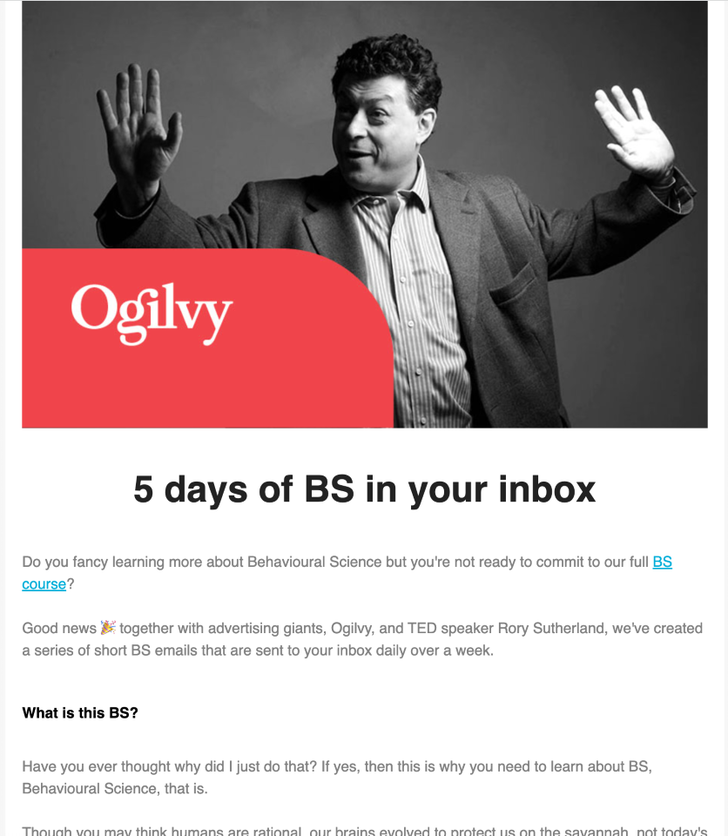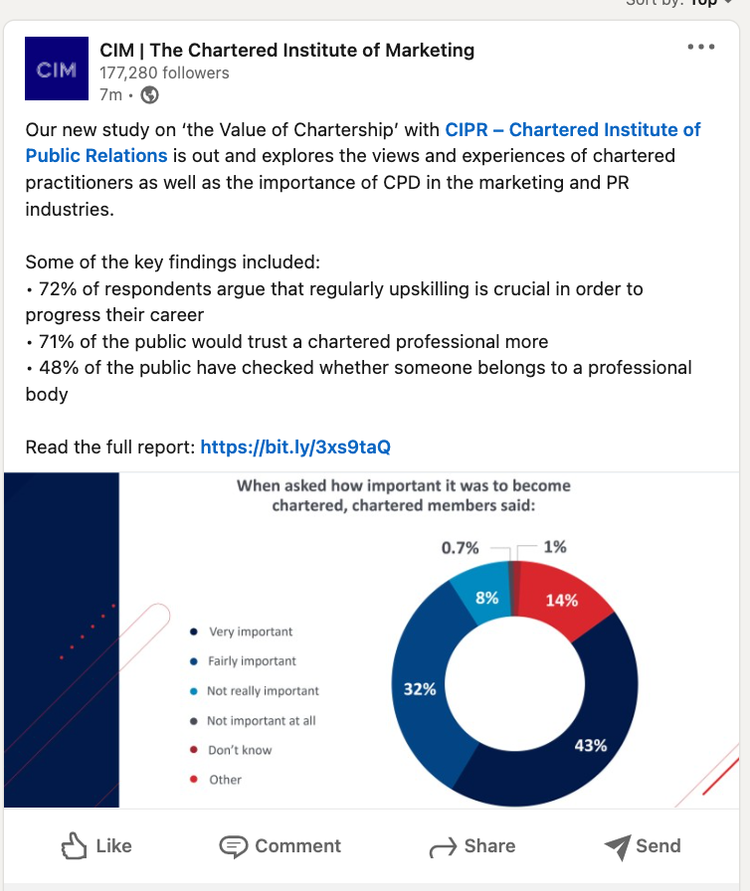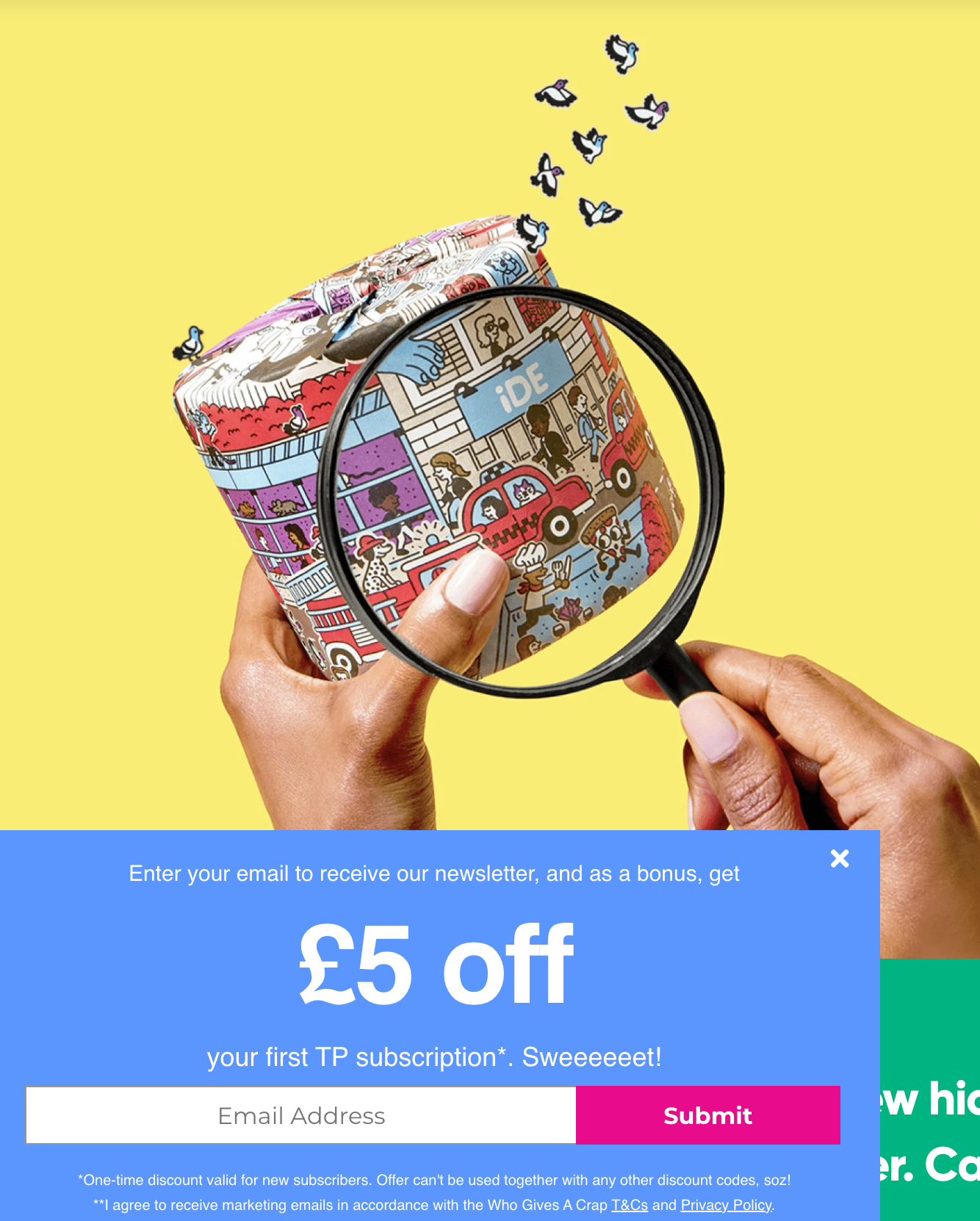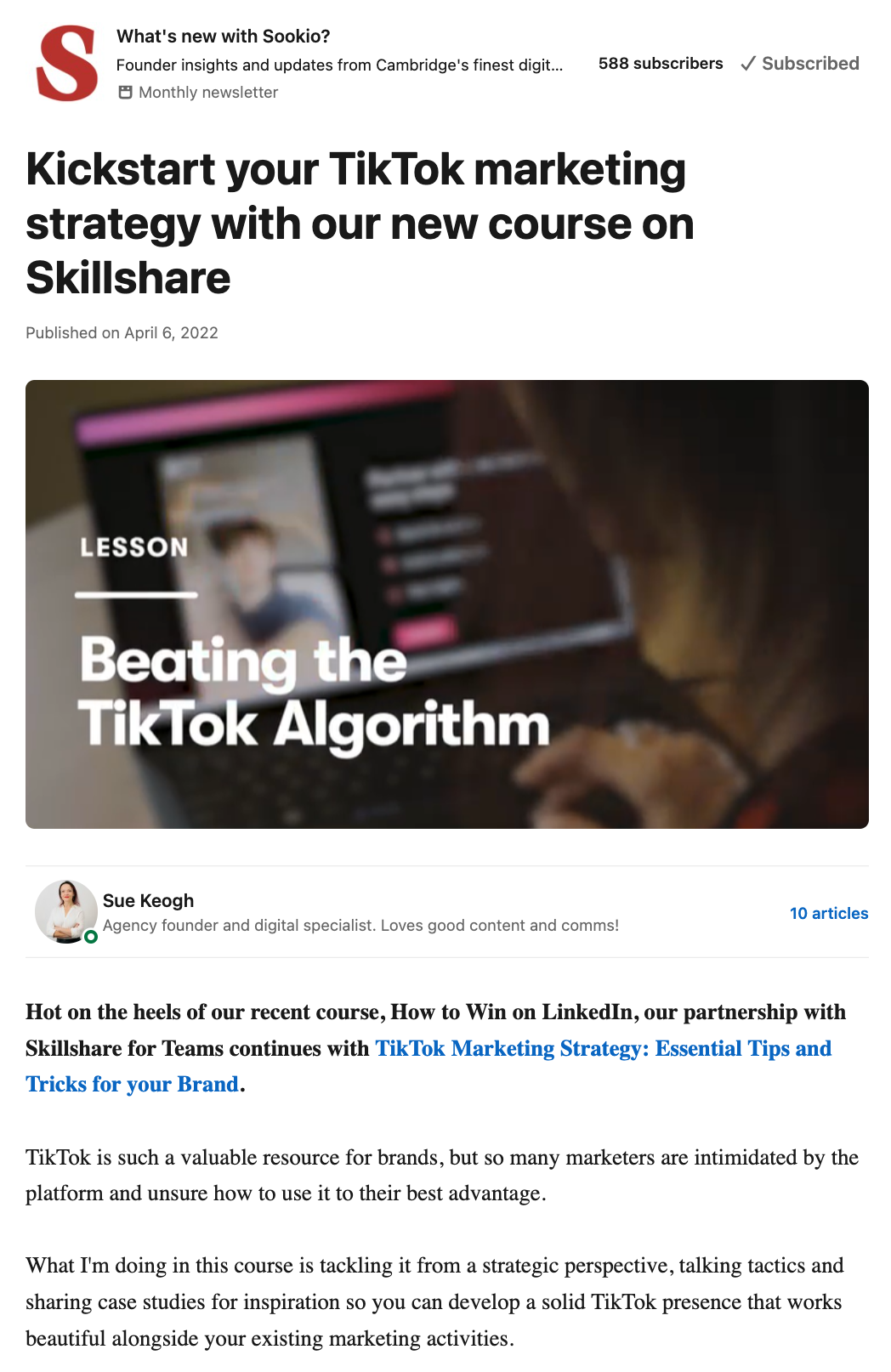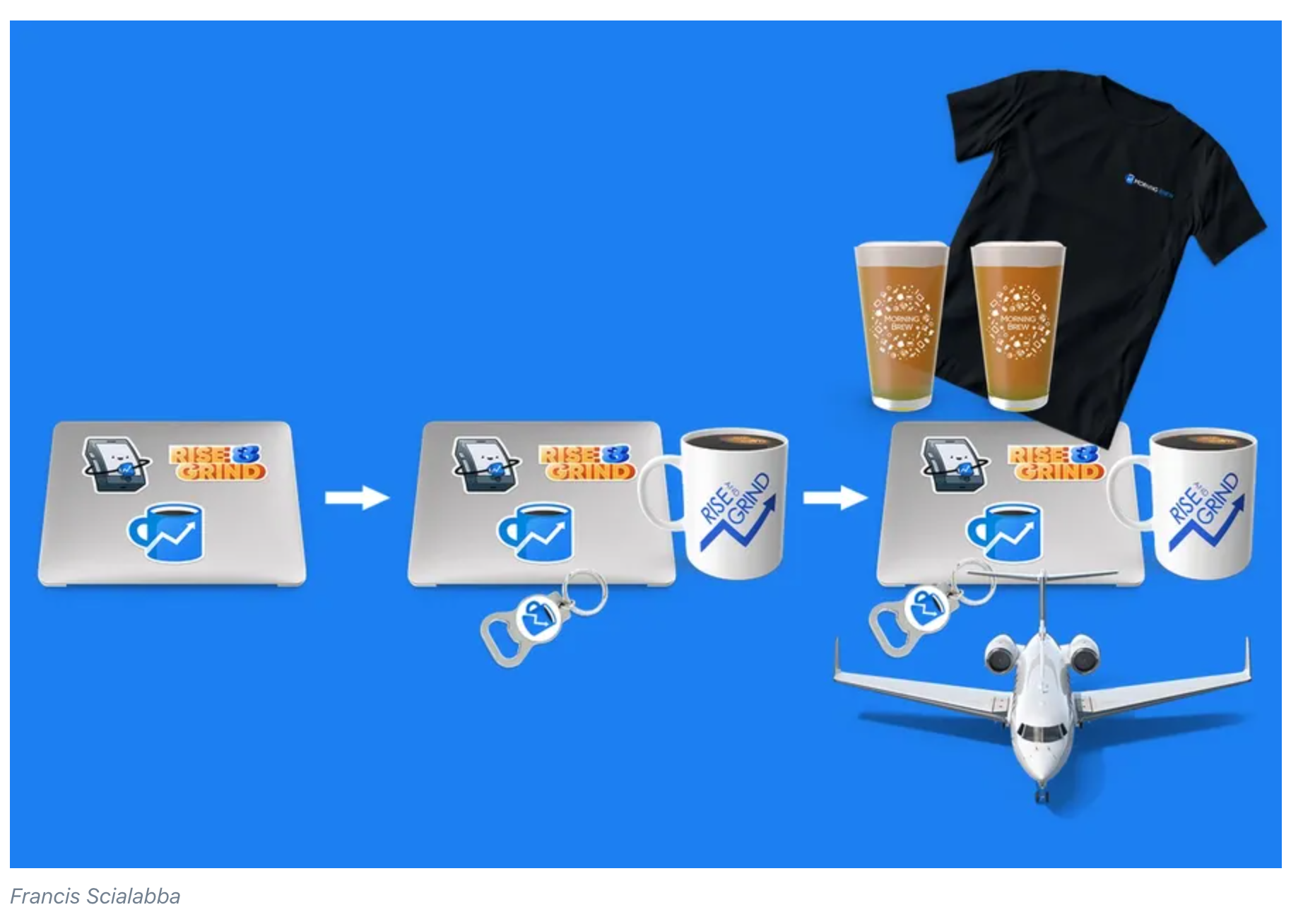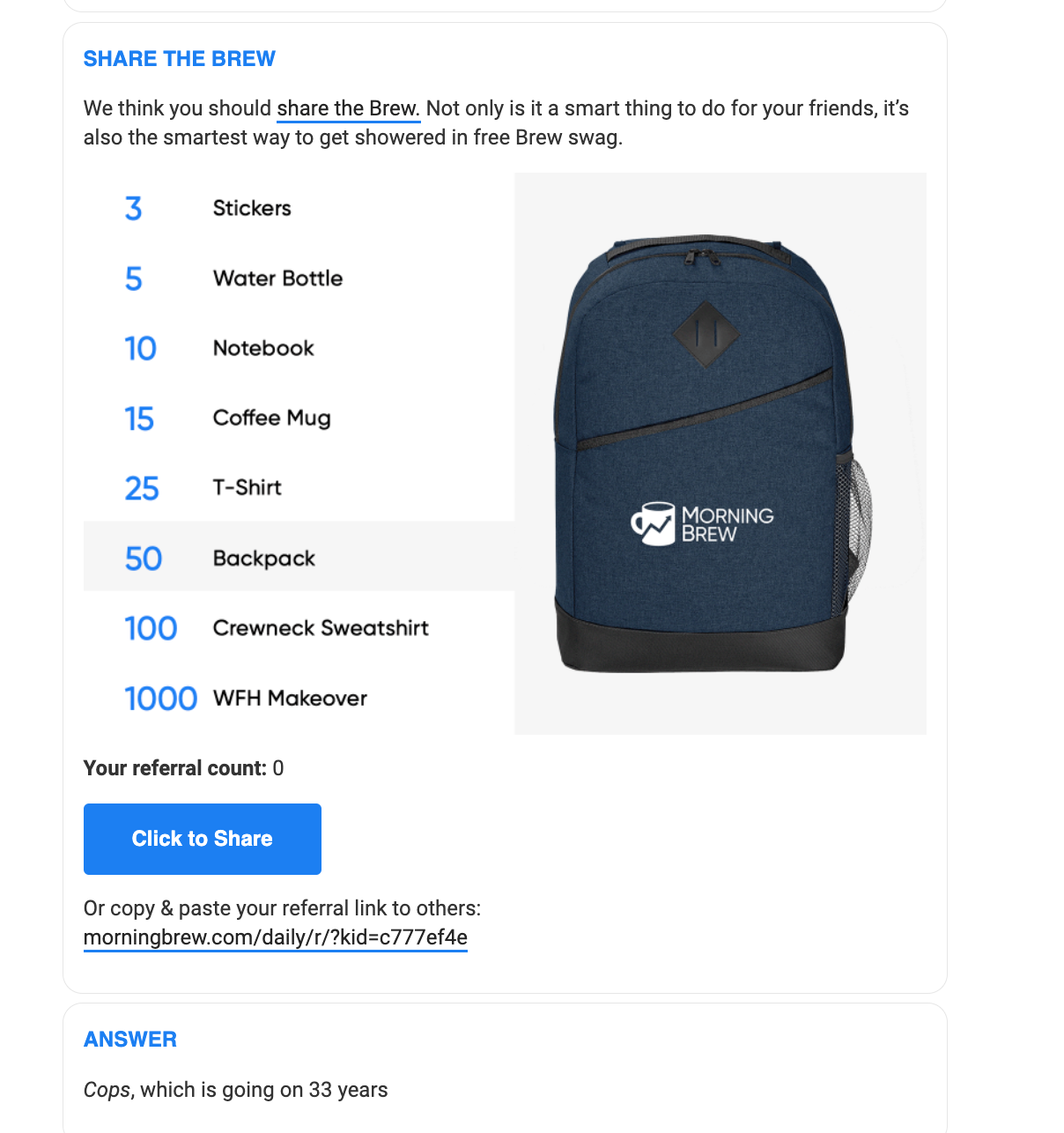The (not-so-secret) secret to growing newsletter subscribers
Since the arrival of GDPR regulations in 2018, organisations have fretted over how to ethically grow their email lists. Getting it wrong can have tremendous legal and reputational ramifications.
We all know we can’t scrape the internet for emails or go through our inbox and chuck in any Tom, Dick or Harry who’s ever written to us to boost our reach. So, you ask. What is a marketer to do?
Healthy ways to get newsletter subscribers
Here’s how to grow your email marketing list:
Create gated content
Provide discounts
Look for speaking opportunities
Capture emails
Welcome warmly
Write LinkedIn thought leadership pieces
Create LinkedIn newsletters
Run contests
Segment your audience
Embrace your niche
Learn from Morning Brew (case study)
Firstly, take a look at your newsletter content and ask yourself, “Is this content valuable to my customers?” This must be yes, or you’ll have unsubscribes faster than the speed of light!
If your emails are all about you, you, you, and not your products and services, then why is your email worth a reader’s time?
Growing an interested list of participants is a long game. What leads to success is capitalising on opportunities and encouraging others to join. It’s integral to make growing the list part of your everyday working life.
Create gated content
One of the fastest ways to grow your list is through gated content shared across socials, or even better, paid promotion. Gated content could include:
Downloadable guides
Whitepapers
Thought pieces
Checklists
Webinars
These can all be very effective ways to grow your email list.
Give people something valuable in exchange for an email address. Though effective, it’s a transactional exchange - so now you’ll need to wow them with your content, or they’ll soon unsubscribe.
Interestingly, a newsletter itself can be effective gated content. Try offering something in a series, or mini-courses where your audience can learn new skills for free.
For example, I recently signed up for TED speaker Rory Sutherland’s 42 Courses’ Behavioural Science five-part email dose.
2. Offer discounts for more email sign-ups
Incentives like discounts on first purchase or free shipping are an inspired way to grow your list and take the risk out of signing up. However, do be careful, as you don’t want to devalue your products and services. Discounts are addictive!
3. Grow your email list through speaking opportunities
Host webinars and appear on other podcasts and webinars. This is all about maximising your presence and creates an impactful way to introduce yourself, your expertise and your products/services to new groups.
If people buy into you, your brand’s tone of voice and what you have to say, you’re on your way to lots of new subscribers. But don’t forget your call to action - ASK people to sign up and make it easy for them to do so. Bonus points if you give them a gated offer, creating a sense of urgency!
4. Capture emails from your website
This is more general website housekeeping, but make sure it’s easy to subscribe to your emails.
Do you have a clearly visible capture on your website? Better yet, give it a bit of personality so it feels in keeping with your brand.
5. Build your newsletter welcome email
When people sign up, make it a pleasant experience. Don’t waste this opportunity to engage with new subscribers, and point audiences to relevant content that could be helpful from the outset.
Equally, a catchy subject line that informs about the content will encourage engagement.
Don’t forget to suggest sharing with friends!
6. Write thought-provoking content on LinkedIn
To gain attention in a busy market, help yourself stand out by being seen as a thought leader in your field.
The people who follow you and engage with your page content are already looking for that sort of content, and therefore will be more likely to subscribe (again, remind people you have a newsletter).
And while we’re on the subject of LinkedIn….
7. Use LinkedIn newsletters to get more email subscribers
This is a brand new feature for companies.
LinkedIn now allows you to publish content on your company’s page as a newsletter.
Your followers will be asked if they’d like to subscribe. If they do, they’ll be sent an email with your published content, which can be daily, weekly, monthly or quarterly.
8. Run contests to encourage people to sign up to your email marketing list
Can you offer something valuable to encourage spreading the word and boosting signups? Provide a free product or your service expertise as the prize. Encourage your subscriber base to share your content.
Remind people of your content across social media. Give them a taste of what your newsletter entails. Don’t forget a link in the bio on Instagram to point directly to newsletter sign up.
9. Segment your email marketing audience
You’ll want to do this from the outset. Segmenting ensures you’re sending the most relevant content to exactly the right audience. You should also give them the opportunity to select how often they’ll hear from you.
Think about the kind of content you’re offering. By making it valuable, you can probably get away with fewer emails.
10. Discover your niche and embrace it
What can your audience expect from your content?
Make comments on similar content across social channels. Break down the kind of content people can expect to read in your newsletter. Let people know about frequency.
There are very few emails I would want to receive daily, so don’t worry about publishing constantly. A really meaty singular email could have a significant impact. Don’t fill the newsletter with fluff, but instead write content with a purpose. People are busy and appreciate brevity.
Use double opt-ins when someone subscribes to your email list. This will ensure they really want to be there!
11. Learn from Morning Brew
The financial, tech and business news outlet, Morning Brew, has risen to prominence over the last few years. I admit to being delighted by my daily roundup of relevant global information that I digest with my morning cuppa. What’s different about Morning Brew? They are a newsletter-first media company. Let’s take a look at emails and their ascent to inbox dominance.
There was a point the media outlet had amassed 100,000 subscribers (no easy feat, sure, but still niche). Here’s how referrals got them to 3.5million subscribers and growing…
Referral schemes are classic transactional incentive that’s already been effective across podcast communities and Kickstarter campaigns. But when it came to Morning Brew, there was no currency exchange. Rather, the value is in sharing Morning Brew’s content with your community in exchange for branded merchandise.
There really is no greater marketing than word of mouth, and by sharing content you are giving it your stamp of approval - so why wouldn’t your friends and followers subscribe? Readers were encouraged to ‘Share the Brew - Get Rewards’. They’re targeting young professionals and there is a status involved with sporting their merch, as it’s a no-nonsense, smart news outlet.
They send out emails six days a week, so there’s a lot of opportunities to share their content!
Rewards come in the form of water bottles, stickers, phone wallets, t-shirts, coffee mugs, and the pièce de resistance… a trip to Brew HQ for over 1,000 referrals.
My favourite Morning Brew rewards that may be helpful for wider marketing:
3 referrals: readers were given access to their Light Roast, the Sunday edition. There’s a daily email Monday - Saturday but only referrers gained the exclusive Sunday newsletter. This feels special and costs them nothing.
10 referrals: readers gained access to their ‘Insider’ Facebook community. How exclusive does that feel?
Morning Brew gamified the process to encourage continued referring… stating you are ‘only xx away from your next reward’. Inspired!
They made it easy to share each member’s unique referral link, in an easy-to-use ‘copy link’ button. You could refer via one-touch through socials or email.
This referral programme wasn’t the only recipe to success, but it certainly helped, with around 30% of newsletter sign-ups coming from the scheme. That’s how they achieved 100k to 1.7 million subscriber growth in 18 months. Referrals continue to provide 20% of their subscriber base to this day.
I won’t paste mine here, as I’m not one for swag, but I do admire the good work.
This referral scheme succeeded in another way. By creating these advocates, seemingly in it for themselves and the rewards, they successfully created ambassadors for their brand.
Sure, the reader is shilling Morning Brew’s content in exchange for goods, but it’s also reinforcing buy-in from the initial user as they are now acting as brand ambassadors and are often more invested in the brand itself.
Email lists – what not to do
If you’re still a little unclear about how to grow your list, it can be helpful to know what’s a definitive no-no. Mailchimp has a great breakdown of what constitutes ‘fair use’.
Check out this useful table demonstrating compliant and non-compliant email lists (be sure to bookmark it if you’re heading to a trade show anytime soon).
Mailchimp also has this stellar GDPR FAQ, and we created a handy guide to GDPR to help you keep on top of compliance.
Let’s talk!
We love talking content creation at Sookio. Sign up for our own newsletter to get more tips and tricks!


